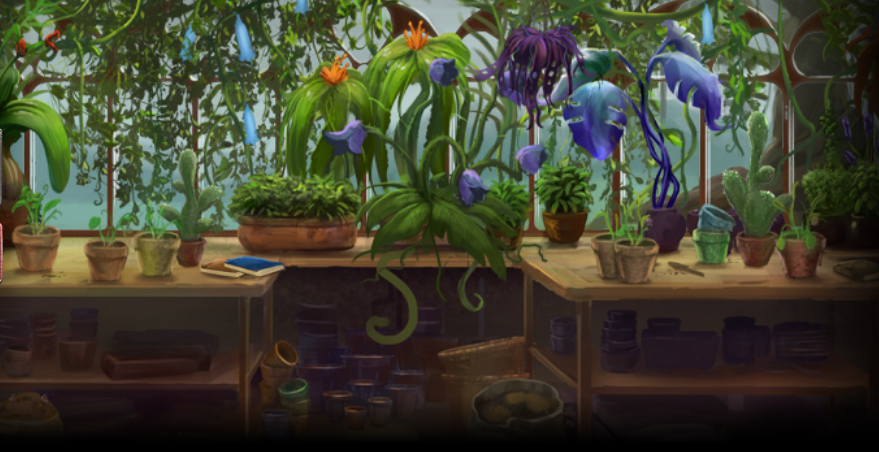|
The Haru-Ichiban (春一番, First Wind of Spring) is afoot. It’s at this time of year, when my nose runs like snowmelt and my eyes itch with hay fever, that my finger hovers over the 'book now' button for a low-cost carrier going anywhere between the Tropics of Cancer and Capricorn, any place where cedar pollen and Gobi sand, which the last of the Siberian northerlies bring to western Honshu, have no local translation. Problem, as always, is funds. You can’t get on the big silver bird without a big silver coin. So, there will be no Bintang in Bali, Sling in Singapore or Singha in Siam, to celebrate winter’s end this year, boo-hoo. About a month ago, however, something fortuitous happened. I discovered a large greenhouse beside the mountain where I work. It is used by the Faculty of Pharmacological Science to grow medicinal plants for research and is tended by a retinue of elderly men in powder blue overalls who water and weed and keep the insects in check. The good thing about March is that there are no university classes; the researchers are all off in Borneo or Guatemala, or wherever it is that they go to study medicinal plants, give medicinal presentations and try local 'medicine' (for medicinal purposes only), which leaves myself and the powder-blue people to enjoy this pollen-free paradise in peace. When I first stepped inside the greenhouse, it was mid January. Outside was a big fat zero; inside, the lush 25 degrees had me loosening my collar and humming “April Sun in Cuba” while I settled down to read my lunchtime paperback. It was Charles Bukowski’s Post Office, a winding yarn about a guy (himself) who skives off during working hours to go gamble on horses, drink, chase women and write bestsellers. Now, the powder blue people disappear around lunchtime, so after a few weeks I started to feel a little lonely sitting in this jungle all by myself. To remedy the problem I sent out an invitation to my long-time friend, the old kitchen gardener who lives up my street, Smokin Joe Matsumoto, asking him to join me. I thought he might enjoy sitting around and telling yarns about ‘old Japan’ beneath the Piper longum (peppercorn) bush, Tamarindus indica (tamarind) tree, Cymbopogon (lemongrass), Zingiber officinale (ginger), jasmine and orchids, but I’m yet to hear back from him. I’d like to show him the Rauvolfia serpentina (Indian snakeroot) which, I've since found out, contains 200 known alkaloids and is used as a traditional antivenin to treat snake bites in India. A little more reading and I discovered that Alexander the Great used it to cure Ptolemy of a poisoned arrow injury; Mahatma Gandhi also took it as a sedative (for stress? yeah, right). Snakeroot contains reserpine, an antipsychotic, antihypertensive alkaloid, which was once used by Western medicine to treat high blood pressure and schizophrenia. It is still one of the 50 most used plants in Chinese medicine. I will knock on Smokin Joe’s door again. He has a bear-like tendency to venture out in late March when the fragrance of the plum and cherry blossoms carries on the Haru-Ichiban. On second thoughts, I fear our little ‘green-ins’ will attract attention. If other administration staff find out they can take their coffee breaks in the tropics, it might get a little too hot in there. I must be careful. The other day I finished the Charles Bukowski book and searched my shelves for the next thing to take to the greenhouse; I passed over Joseph Conrad’s Heart of Darkness (too dark), Spencer Chapman’s WWII soldiering-in-Malaya memoir The Jungle Is Neutral (too long), and Peter Matthiessen’s missionaries-in-the-Amazon adventure At Play in the Fields of the Lord (too much drama). In the end, I picked out an old favourite, Eric Hansen’s Stranger in the Forest, about his journey on foot from one side of Borneo to the other. So with coffee and book in hand, and whistling Guns ‘n Roses’ “Welcome to the Jungle”, I returned to the greenhouse yesterday. Only to find it locked.
1 Comment
|
This Blog:What is the essence of a traditional Japanese neighbourhood? Writing from my home in Himeji, a castle town in western Honshu, Seaweed Salad Days distills, ferments, presents! Archives
March 2024
Categories
All
|

 RSS Feed
RSS Feed
